Increase efficiency with the right office lighting
- Af Mette Bergholdt
- Last updated27. May 2024
Good lighting in the office is crucial for creating more efficiency and happy employees who feel comfortable.
Most people who spend long hours in an office and in front of a screen know the challenge of getting tired during the day and maybe even getting a headache. Of course, there can be several reasons for this, but one of them is poor office lighting. That’s why good office lighting is important. The right lighting in the office has many benefits and helps to create optimal working conditions. It’s all about creating a comfortable, stimulating and good working environment.
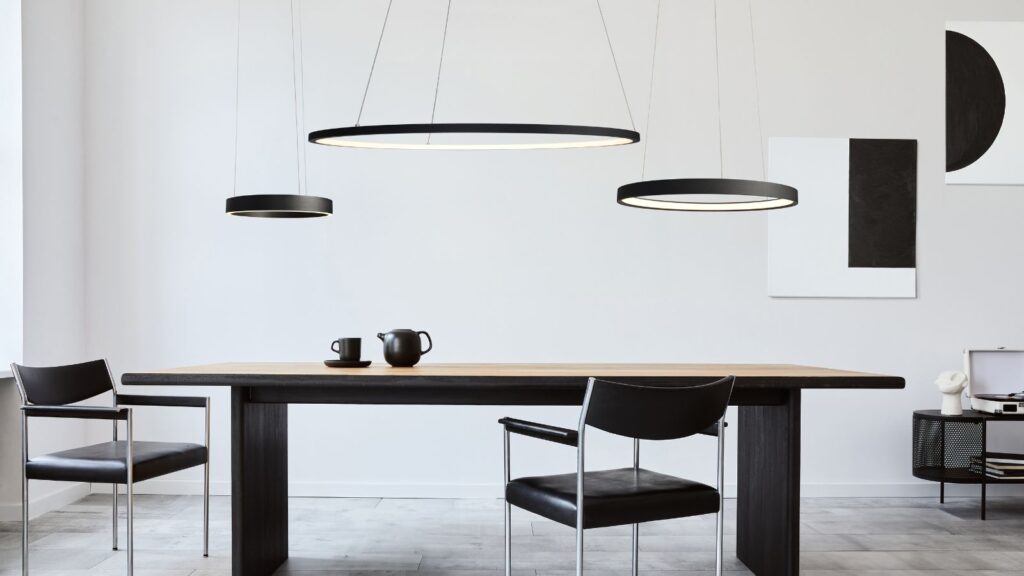
A bit about the author:
Mette Bergholdt
Share post:
Related posts:
The ultimate guide to task lighting in different environments
Rules for office lighting
Proper lighting in the office is also important for compliance with official regulations. Compliance with the European standard not only ensures that the lighting is of high quality and energy efficient, but also that it supports employee wellbeing and productivity. Furthermore, compliance with these standards plays a significant role in meeting the requirements of the Labour Inspectorate, which are set to protect the health and safety of employees.
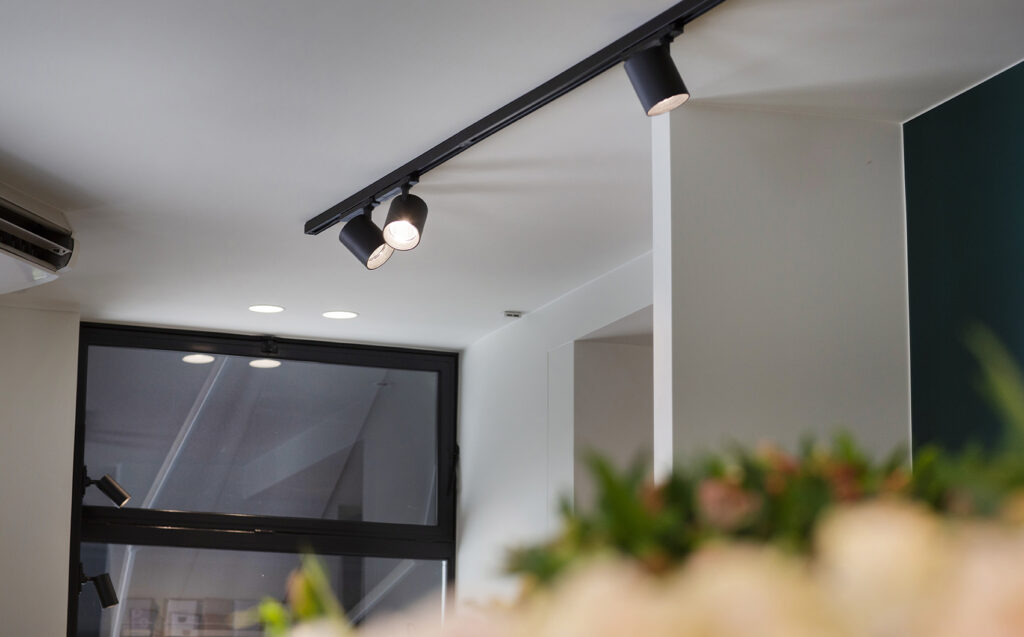
Office lighting is not just in the office itself - Optimal lighting must be considered everywhere
Office lighting is more than just lighting in the office itself. It’s about creating good task lighting throughout the office environment. We need to get down to the details and remember to think about the general lighting and the lighting at the desk. This is where optimal office lighting is achieved and we create optimal working conditions. Let’s not forget meeting rooms and everything else that goes with them, where the choice of lamps is also crucial. We’ll go through it all here, and if you need to talk to one of our lighting experts about lighting your office afterwards, don’t hesitate to get in touch.
The right color temperature (Kelvin) is important
A common mistake made with office lighting is that the light is too ‘warm’. In other words, the Kelvin value is too low.
Studies have shown that colour temperature has a huge impact on our energy levels and mood, so this needs to be taken into account. The conclusion is that if you are exposed to warm light for a long time, you will become drowsy and tired. As a result, work efficiency will decrease.
What is the optimal color temperature for office lighting?
Our recommendation is to choose lamps with a colour temperature of 3000K or higher. This is a great starting point for achieving the most efficient office work lighting, which has a positive effect on employee productivity.
Create connection between natural and artificial light
Office environments are very different, so it’s not enough to focus on colour temperature alone. Natural light is also important to consider.
Light should be viewed as a whole, and there should be interaction between artificial light and daylight
Daylight is the best form of task lighting, so it’s important to have enough windows to light up most of the room. However, it will always be necessary to combine natural light with supplementary artificial light as daylight varies in strength.
If the room has north-facing windows, extra lighting will often be needed than if the office has south-facing windows.
To match the artificial light to the daylight, it’s a good idea to use lamps that allow you to adjust the illuminance.
This can be in the form of lumens (indicating brightness) or kelvin (colour temperature). This way, there won’t be too much contrast with natural light as the seasons change.
If the office is designed for it, place the desks against the window wall so that the line of sight is parallel to the windows. Of course, there should be a way to shield the sun so that you’re not bothered by the light or heat. Especially if the windows are south-facing.
The shading should be a flexible solution so as not to block out all light and views.
The different types of light in the workplace
For optimal lighting, one type of light and lamp is rarely enough.
Instead, you need different types of lights and lamps that suit different workspaces and provide a good dynamic.
General lighting
First and foremost, there must be general lighting, or ambient lighting as it is also known, which ensures an even distribution of light throughout the room. It is recommended to use a good ceiling lamp for the office that provides diffuse light or a track system with the right spots. Flexible lamps or systems are a good idea, as they allow for adjustment of the lighting if there are any rearrangements.
The light source should be shielded and positioned so that the light comes in from the side of your desk. Otherwise, there is a risk of psychological glare or reflection on the screen. It is therefore important to adjust so that there is not too much light that makes it difficult to work efficiently.
In a large open-plan office, the same general office lighting throughout the entire space will not be optimal. Instead, it should be customised so that there is variation from corridors, workstations and other areas. Otherwise, it can quickly become monotonous.
Need to be able to adjust the brightness?
Our track systems can be controlled so you can adjust the light and specify the brightness in the room, whether it’s in the office itself or in the meeting rooms. Once the tracks are installed, you can freely choose where to hang the lights and direct the lamp’s light to match the room layout.
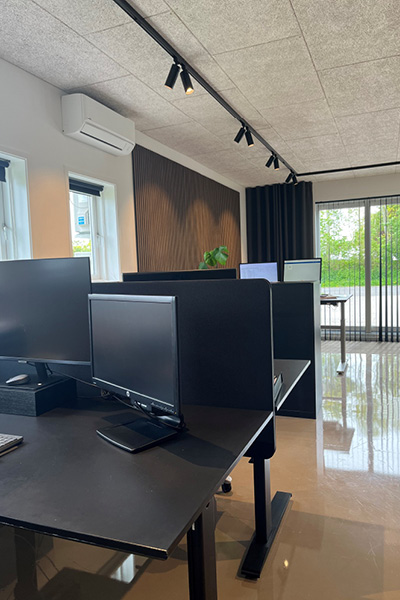
Særbelysning
Accent Lighting: A Definition and Its Use in Illuminating Specific Room Elements
Accent lighting is a term used for lighting that is employed to illuminate specific elements within a space. This could include a whiteboard, a conference table, or decorative features. Utilizing accent lighting not only introduces variation in lighting schemes but can also make a room appear brighter by illuminating different walls.
Consider where accent lighting could be beneficial in your office environment. Perhaps you have a lounge area in the office where a mood-setting light with a decorative pendant would be ideal. It might also be an architectural feature you wish to highlight, or maybe a large wall that can reflect light. We offer a variety of modern lamps that are both decorative and effective in creating unique lighting effects.
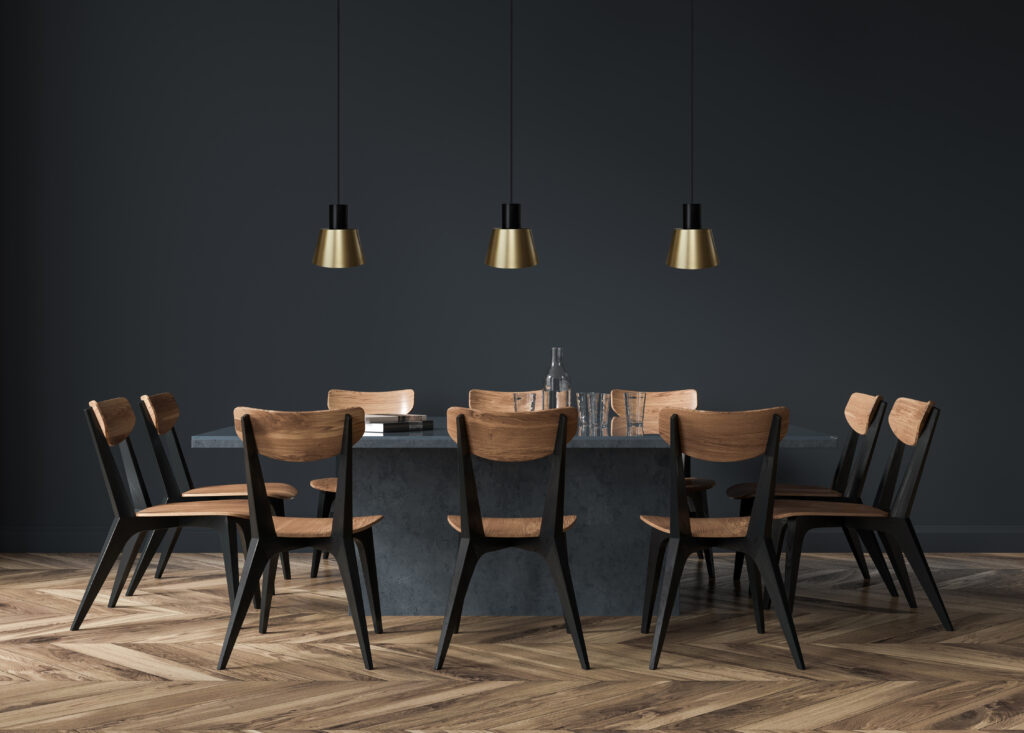
Light at the workstation
In some offices, it might also be optimal to use additional lighting at the desk in the form of a good desk lamp, allowing employees to adjust the actual amount of light at their workspace.
For lighting at an office workstation, the easy solution is to use a desk lamp with concentrated light as a task lamp. However, you can also use floor lamps or wall lamps as alternative desk lamps.
Whether you choose a desk lamp, a wall-mounted lamp, or a freestanding lamp for your office, it is crucial that the lamp does not cause glare. Therefore, the light should come in from the side, below eye level. It can also be a good idea to choose a lamp with adjustable brightness, as this allows employees to adapt the light level throughout the workday.
In our collection, you will find several good options for a desk lamp, where functionality goes hand in hand with minimalist design. They are available in several beautiful colors.
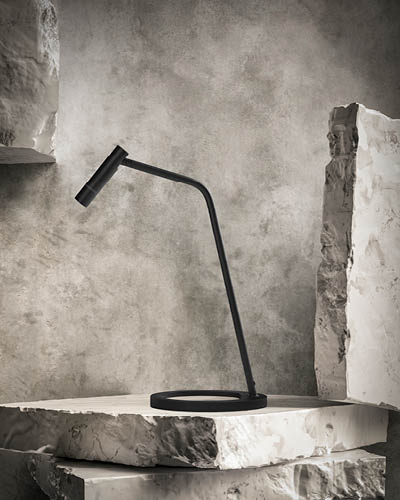
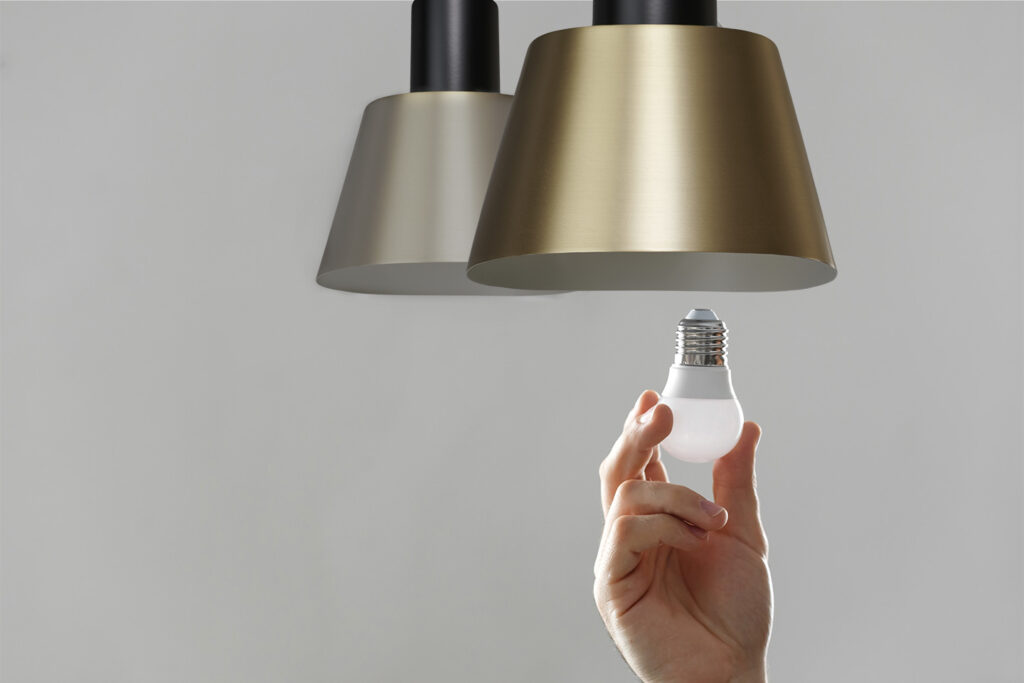
What light sources should we use for good office lighting?
Not all light sources are suitable for every location. For office lighting, it is advantageous to use a combination of multiple light sources. As described above, good office lighting involves considering general lighting, accent lighting, and lighting at the workspace. Therefore, it’s important to consider which type of light source is best suited for different areas. For accent lighting, we often use lamps such as pendants, which typically use LED bulbs. However, for general office lighting, where we talk about spotlights, these are integrated light sources that do not require bulb changes.
Whether you have the freedom to choose the light source for the lamp or it comes with integrated light, it is highly beneficial to opt for LED light sources. These not only have a longer lifespan but are also more environmentally friendly and energy-efficient.
Can we assist you?
In the above, you have received some good advice on how to create the right lighting for office spaces and which fixtures can be used in different areas. This applies to both your office and the actual workstation, where we need more targeted light while still avoiding physiological glare, as well as other areas in the office that need to be clearly illuminated. Office lighting is thus many things and is an important element in ensuring that the office space facilitates concentration and efficiency. And remember these tips when it comes to lamps for your home office.
If you need help, advice, and guidance regarding office lighting for businesses, give us a call or send us an email. We are more than happy to provide lighting consultation and explain how you can ensure the right lighting in your office. We have all the lamps needed to achieve the right office lighting.
In addition to office lighting, we can also help with other types of commercial lighting. Read here what plays an important role when it comes to store lighting or what you need to consider when it comes to lighting for restaurants and cafés.
Frequently Asked Questions about office lighting
It’s essential to consider lighting from the start to ensure a smooth transition between different types of light sources. This includes both primary lighting, task lighting, and specific light at the workstation itself such as table lamps. Remember to also integrate appropriate lighting in corridors, meeting rooms, canteens, etc. to create a harmonious and functional lighting experience throughout the work environment.
Primary lighting is important, i.e. the lighting that illuminates the entire room. Here you need a flexible solution, preferably with tracks and spotlights, so it is possible to move the layout around.
Yes, you can use a pendant light in an office environment. However, we do not recommend it as primary lighting, but more as special lighting, which can be in lounge areas, over dining tables in the canteen, over the meeting table in the meeting room.
Pendants help to create a mood and give expression to the room.
We have several different spotlights that are well-suited for office environments. Among them are our Easy spots, which are available as 3-phase and can be used with our Global tracks. Additionally, S16 spots are also suitable for office environments.
